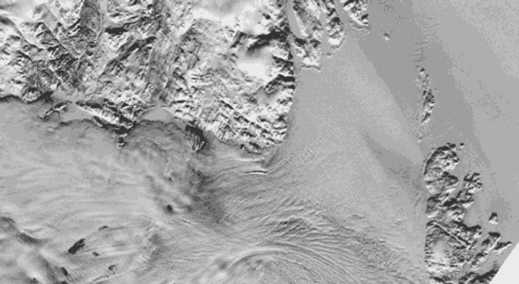How studying clouds can improve climate models
Associated researcher Kara Lamb grew up reading his father’s American Scientist magazines. She absorbed everything she could about quantum physics and for a time thought she would study it for the rest of her career. But in 2008, after Lamb completed his master’s degree on the subject, the urgency of the climate crisis loomed ever larger. The Intergovernmental Panel on Climate Change has just published its fourth assessment report, and the questions it raised about Earth’s systems were as complex as they were motivating, enough for Lamb to choose to redirect his doctorate and subsequent work to atmospheric science. Now at Columbia Engineering, Lamb is studying how machine learning methods can be used to better understand the microphysics of cirrus clouds.
Cirrus on Federal Way, WA. Photo: Ron Clausen via Creative Commons
Cirrus clouds form higher in the atmosphere than almost any other type of cloud, tens of thousands of feet above the ground. They form when water vapor is pushed into the stratosphere by rising warm, dry air, and then freezes due to low temperatures. The results are thin, feathery clouds made up of thousands to millions of ice crystals. These ice crystals – and their many different structures, shapes and sizes – influence the way cirrus clouds both reflect incoming sunlight and trap outgoing heat from Earth, also known as the radiative cloud effect.
Lamb is one of the first people to use machine learning to study the shape of ice crystals in cirrus clouds. By doing so, she hopes to shed light on how scientists account for clouds in climate models.
“Even though it seems like a small chunk, when you look at the sensitivity of climate models to cloud feedback, there’s quite a large spread across the climate models,” Lamb said.
machine learning could help remove this uncertainty by processing and generalizing new insights from vast expanses of ice crystal data at unprecedented speed. Traditionally, atmospheric scientists have had to come up with a set of mathematical equations, based on physical principles, to describe how a system – in this case, a cloud – works. This process can be slow, as scientists must iteratively compare models to observations and then adjust model parameters to improve performance. In contrast, machine learning can be used to learn directly from data; these algorithms build models by “training” on observations.
Pattern recognition is one of the many ways machine learning can integrate with cloud microphysics research. While previous research applying machine learning to ice crystal observations focused on classifying images based on the shape of ice crystals, Lamb plans to take it a step further and learn something about the process of ice growth directly from the images, using state-of-the-art technologies. methods developed by the machine learning scientific community. Now three months into the three-year project, Lamb is testing algorithms. Once the model is trained, Lamb estimates she will provide him with some 12 million different images for this project alone.

Electron microscopy images of individual ice crystals that were captured by a weather balloon in Billings, OK, and stored in liquid nitrogen for return to the lab. Image credit: Nathan Magee (The College of New Jersey) and Jerry Harrington (Penn State University).
“Each data source gives us a different little part of the picture,” Lamb said. “This is where we want to use machine learning methods as well as statistics to try to figure out how to put all this information together.”
Most of the data Lamb uses comes from collaboration with other universities. For instance, Kara Sulia at the University of Albany compiled ice crystal observations from various aircraft measurement campaigns into a massive database. At Pennsylvania State University, Jerry Harington captured high-resolution images of ice crystals using a balloon instrument to collect and then freeze samples in liquid nitrogen. Other datasets come from large-scale “cloud chamber” experiments where cloud formation is simulated in a laboratory, allowing scientists to systematically study cirrus formation while testing different cloud conditions. aerosols, temperatures and pressures. Lamb uses cloud chamber data from his previous research at the University of Chicago, done in collaboration with researchers at the Karlsruhe Institute of Technology in Germany.

Kara Lamb, a research associate in the Department of Earth and Environmental Engineering at Columbia University, and a colleague monitoring instruments during cirrus simulation experiments in the Interaction and Dynamics Cloud Chamber aerosols in the atmosphere of the Karlsruhe Institute of Technology. Photo: Kara Lamb
And yet, despite what all of this data shows, most climate models – including those used for the reports of the Intergovernmental Panel on Climate Change – make a basic assumption that ice crystals are spheres. That’s partly because the models are so large-scale that they have to rely on simplified, “computationally efficient” ways to represent complex processes, Lamb explained.
“The model should be something you can run in a fast enough time frame to get a response,” she said.
Applying machine learning could help minimize some of this tension between accuracy and efficiency. As Lamb makes progress in using machine learning to analyze ice crystal data, she is simultaneously collaborating with Marcus van Lier-Walqui at the Columbia Climate School Climate Systems Research Center and colleagues at the National Center for Atmospheric Research on another project focused on how to apply this kind of new knowledge to the Community Earth System Model. The project is in partnership with the Earth Learning Center with Artificial Intelligence and Physics (LEAP) and is the perfect complement to Lamb’s deeper investigation of cirrus clouds.
“If we want to understand the significance of the radiative effects of these clouds, we need to more accurately represent the shapes of their ice crystals in climate modelling,” Lamb said. “That’s one of the biggest uncertainties to resolve.”
Fortunately, the work of Lamb and his colleagues offers a promising start.




